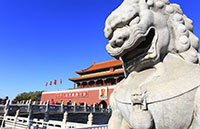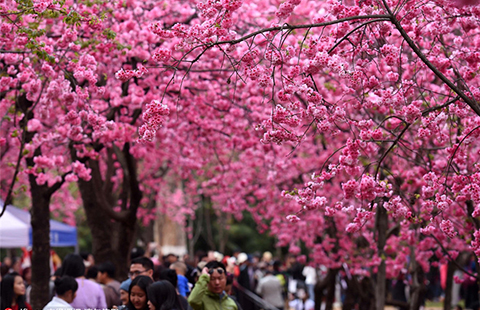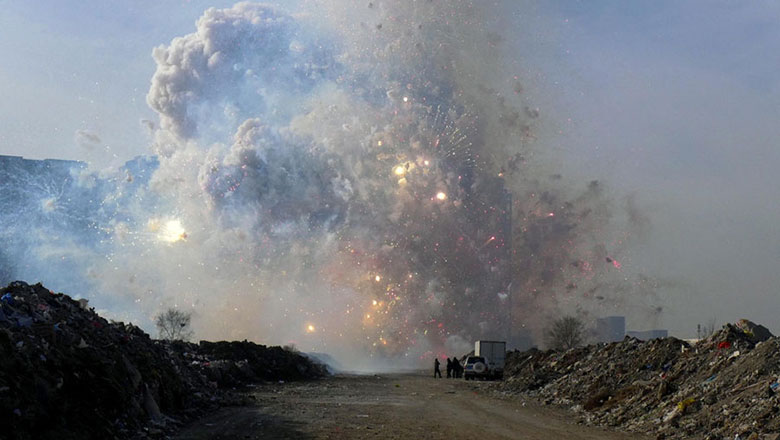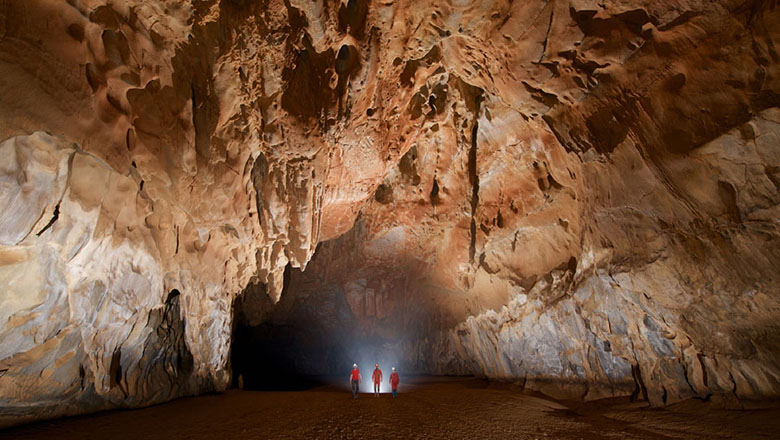Centuries-old temple remains undisturbed
Updated: 2016-10-06 12:05
By LI YANG and ZHAO RUIXUE in Jinan(China Daily)
|
||||||||
 |
|
Clay sculptures in Thousand-Buddha Hall in the temple. JU CHUANJIANG/CHINA DAILY |
There are 40 colorful clay sculptures of monks, most of which are believed to be made in the Song Dynasty according to 40 real-life monks in the temple. Each of the monks has his own facial expressions and gestures, and even the veins on their forearms and necks are vividly carved. Some are smiling, some are angry and some are pondering. The colors, from mineral substances, remain fresh and bright today.
"The clay sculptures seem to have life. Each one of them teaches the viewer a lesson about life," said Zhang Ruidong, a local traveler. "You can find yourself among them. My looking is like a process of dialogue with them."
During a renovation project in 1982, workers accidentally found silk-made organs, Buddhist texts, copper coins and ancient books in compartments within these clay figures.
There are many well-preserved delicate stone and wood embossments, and frescos on the buildings, telling Buddhist stories. Several stone tablets inscribed with records of the main renovation projects of the temple in the past 1,000 years still stand at corners of the shady courtyard.
Li Deguang, a local traveler, said: "I visited the temple in 1983. It looks exactly the same after 33 years. The temple is an ideal, reminiscent place, while the city has changed too much to be recognized even by locals if they have left for 33 years."
In the back of the temple is Pratyeka (meaning 'every'), a 55.7-meter pagoda of the Song Dynasty, and a monk graveyard covering a period of about 1,500 years. It took the Song people 65 years to build the eight-angle nine-story pagoda with brick, stone and clay. The graveyard has 167 stupas, which refers to a kind of dome-shaped monument used as a Buddhist shrine for relics, and 81 tombstones inscribed with epitaphs.
"Tourism brings about commercialization, against which the Lingyan Buddhists must be vigilant and try to maintain the purity and tranquility of the temple, making it a habitat for hearts," said Hong'en Master, a monk in Lingyan Temple. "We are responsible for handing down the temple to the next generation, just as we received it from our masters."
Contact the writers at liyang@chinadaily.com.cn

 Top 10 Chinese cities with 'internet plus transportation’
Top 10 Chinese cities with 'internet plus transportation’
 New energy cars shine at Paris Motor Show
New energy cars shine at Paris Motor Show
 23 baby giant pandas make debut in Chengdu
23 baby giant pandas make debut in Chengdu
 Heritage list salutes Chinese architecture
Heritage list salutes Chinese architecture
 Happy hour for prince and princess in Canada
Happy hour for prince and princess in Canada
 Chinese and Indian sculptures on display at the Palace Museum in Beijing
Chinese and Indian sculptures on display at the Palace Museum in Beijing
 Rescue work at the typhoon-hit provinces
Rescue work at the typhoon-hit provinces
 Wonderland-like sunrise in East China
Wonderland-like sunrise in East China
Most Viewed
Editor's Picks

|

|

|

|

|

|
Today's Top News
Trump outlines anti-terror plan, proposing extreme vetting for immigrants
Phelps puts spotlight on cupping
US launches airstrikes against IS targets in Libya's Sirte
Ministry slams US-Korean THAAD deployment
Two police officers shot at protest in Dallas
Abe's blame game reveals his policies failing to get results
Ending wildlife trafficking must be policy priority in Asia
Effects of supply-side reform take time to be seen
US Weekly

|

|









